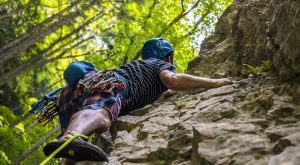 Rock climbing has found its way back in the limelight. Close to 100 new indoor climbing gyms have been opened on a national level in the past 3 years; participation in outdoor climbing has grown 20.3 per cent; while 1,000 to 1,500 people try climbing for the first time each day.
Rock climbing has found its way back in the limelight. Close to 100 new indoor climbing gyms have been opened on a national level in the past 3 years; participation in outdoor climbing has grown 20.3 per cent; while 1,000 to 1,500 people try climbing for the first time each day.
Are you ready to try out climbing, or bouldering in Croydon? You need to be aware of a few things ahead of time and you will also require a few pieces of gear.
Prepare the Body
Hands are your most important organs, according to a professional climber. If you plan to last longer than 15 minutes, you should think about investing in a hand gripper. You should then work up to squeezing out 50 repetitions with each hand every single day.
You then need to focus your attention on the core, which does a lot of the work to keep your body close to the wall. You should also start incorporating single-leg circles, planks and bridges into your everyday gym routine for the best results.
Overall mobility and flexibility will give you the upper hand when you start to climb. If you are a beginner, you should focus on working the hips. Sit in butterfly pose as well as pigeon pose. Open hips allow you to better reach tough footholds and generate momentum from the lower body.
Cardio is another area to focus on. New climbers that don’t have a cardio base often get winded halfway up a route. To avoid such a situation, try building a solid base either before or in the early stages of your climbing pursuits.
Understand the Jargon
Once you have settled on the type of climbing that you would like to try, you will want to start learning some of the lingo. If you master climber language, you will have an easier time learning from feedback and picking up new skills as you go.
While there’s an entire world of climbing jargon, you should consider including the terms below throughout your next conversations with climbers. The list is one part climber slang and one part helpful, but overall it will help you sound like a seasoned veteran right from the start.
- Beta: Helpful information about a route that’s passed on verbally from a trusted climber that has already completed the climb. As the beginner, plan on being exclusively a beta consumer.
- Bomber: It is derived from “bombproof,” which means indestructible or very secure. It may refer to a type of rock, hold, or even the actual gear.
- Choss: It is a collective term for loose, crumbly rock, dirt, or vegetable i.e. anything on the route that isn’t stable enough to grab. It is usually used as an excuse for taking a fall or otherwise fumbling on a route.
- Gripped: It refers to a mental state that results from being gripped by fear while climbing, usually due to exposure or difficulty or even the unexpected presence of choss.
- Pumped: When the forearms become so swollen with lactic acid that it becomes impossible for the climber to grip properly. It usually happens at the end of a difficult route. It can serve either as a badge of honour that proves just how hard you climbed or as a source of frustration that you are unable to climb any longer without first taking a break.
Technique Considerations
The way that you move your feet is usually more important than where you place your hands. A good climber spends up to 80 per cent of the time looking at his/her feet. Experienced climbers also usually climb with their arms straight.
Practice Etiquette
Demonstrating the basic climbing manners will make assimilation easier. Here are a few things that you should avoid:
Never start climbing a route at the same time as the person on the route next to yours. Even if the routes never intersect, climbers require a bit of space on the wall. Allow them to get at least a third of the way up before you start.
Never step on the rope. It is the thing that will save your life in case of a fall, which is why you should avoid doing anything likely to wear it down faster. It might not be that big of a deal when indoors, but it isn’t a habit you should adopt.